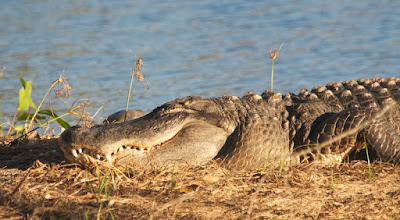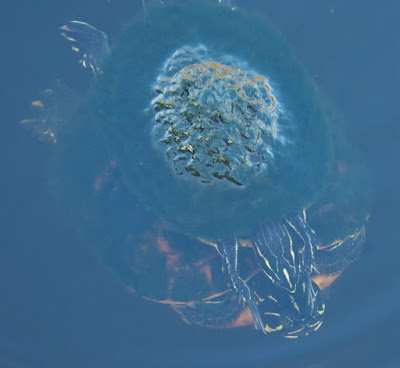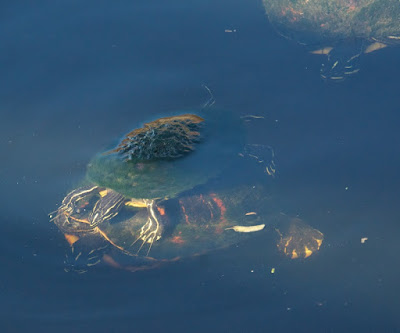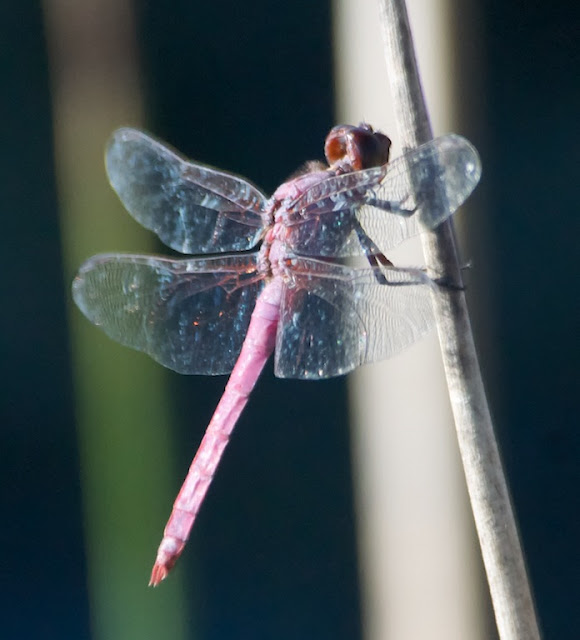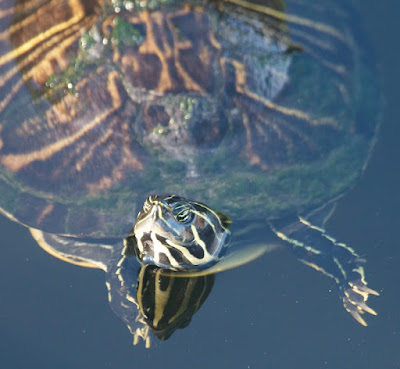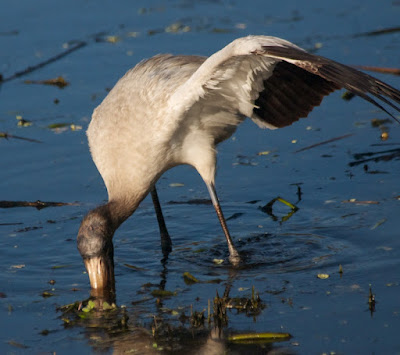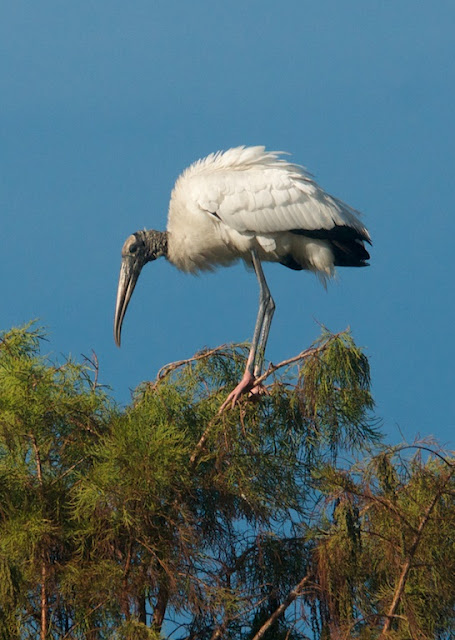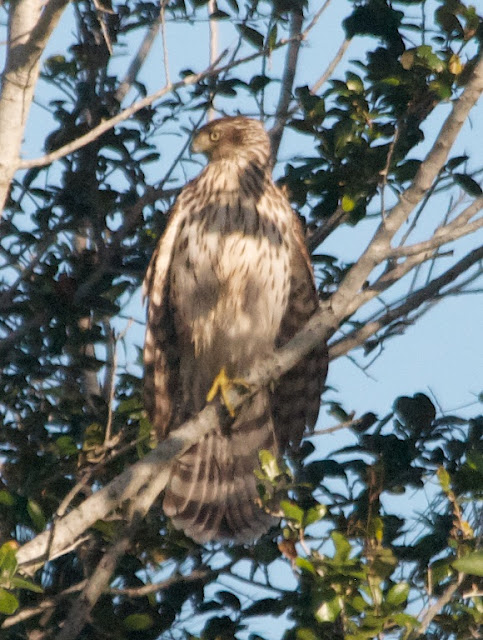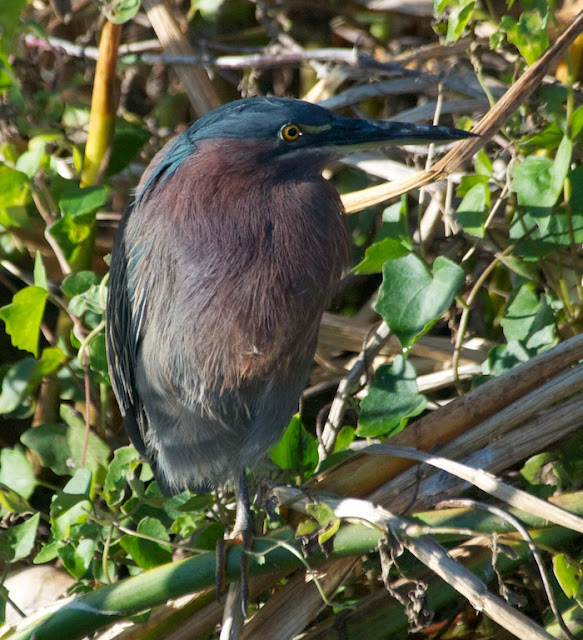The most obvious of the lot is the American Alligator (Alligator mississippiensis); a large adult can often be seen basking at the water’s edge.
Florida Red-bellied Turtles (Pseudemys nelsoni), the stars of my previous post on turtle courtship rituals, are also frequent baskets on sunny days.
Florida Softshell Turtles (Apalone ferox) bask too, but not as much as the previous species; they are more likely to be seen in the water.
A less common sight, though they are probably numerous enough in the area, is the Florida Water Snake (Nerodia fasciata pictiventris).
I introduced these two species together to set up this series of photographs, showing a softshell methodically eating its way through the shed skin of a (presumed) watersnake. Florida Softshells are both active hunters and scavengers (indeed they will eat almost anything, plant or (preferably) animal).
The Green Iguana (Iguana iguana), though, is a confirmed vegetarian. Iguanas are not native to Florida. Like so many other reptiles they are here as castoffs or escapees from the exotic pet trade. They are now well established in the area, where they are rapidly being treated as a pest as their population booms.
Fully grown iguanas are large and spectacular creatures, and are undoubtedly frightening to those not aware of their gentle nature. They can eat their way through a lot of landscape plantings, though (according to the article I linked to above), their droppings create sanitation issues and their burrowing habits are undermining pathways, seawalls and levees. Like most exotics, they should have been left in their native range.
Moving on from the reptiles: here, ensconced in his mudbank, is a male Fiddler crab (Uca sp).
The waters of the two refuges are full of fishes, mostly little ones like these.
Like the iguana above the water, however, many of the most obvious fishes in the area do not belong here. The Mayan Cichlid (Cichlasoma urophthalmus) arrived in the state in 1983 and is now abundant in South Florida. It is just one of a range of escapees from the aquarium trade that are crowding out native fishes despite frantic, though chronically underfunded, efforts to control them.
Northern Raccoons (Procyon lotor), however, probably welcome the exotics with the same enthusiasm they do native fishes. They are certainly thriving in the area, where (as almost everywhere else in their range) they seem to do almost better in man-made habitats than we do.
I’ll finish with a butterfly, one of the numerous South Florida skippers. It probably says something for the lack of enthusiasm for skippers even among butterfly-watchers that this species has to put up with a particularly cumbersome English name: the Southern Broken-Dash Skipper (Wallengrenia otho). It is a widespread species, ranging from the southeastern US to Central America.
Florida Red-bellied Turtles (Pseudemys nelsoni), the stars of my previous post on turtle courtship rituals, are also frequent baskets on sunny days.
Florida Softshell Turtles (Apalone ferox) bask too, but not as much as the previous species; they are more likely to be seen in the water.
A less common sight, though they are probably numerous enough in the area, is the Florida Water Snake (Nerodia fasciata pictiventris).
I introduced these two species together to set up this series of photographs, showing a softshell methodically eating its way through the shed skin of a (presumed) watersnake. Florida Softshells are both active hunters and scavengers (indeed they will eat almost anything, plant or (preferably) animal).
The Green Iguana (Iguana iguana), though, is a confirmed vegetarian. Iguanas are not native to Florida. Like so many other reptiles they are here as castoffs or escapees from the exotic pet trade. They are now well established in the area, where they are rapidly being treated as a pest as their population booms.
Fully grown iguanas are large and spectacular creatures, and are undoubtedly frightening to those not aware of their gentle nature. They can eat their way through a lot of landscape plantings, though (according to the article I linked to above), their droppings create sanitation issues and their burrowing habits are undermining pathways, seawalls and levees. Like most exotics, they should have been left in their native range.
Moving on from the reptiles: here, ensconced in his mudbank, is a male Fiddler crab (Uca sp).
The waters of the two refuges are full of fishes, mostly little ones like these.
Like the iguana above the water, however, many of the most obvious fishes in the area do not belong here. The Mayan Cichlid (Cichlasoma urophthalmus) arrived in the state in 1983 and is now abundant in South Florida. It is just one of a range of escapees from the aquarium trade that are crowding out native fishes despite frantic, though chronically underfunded, efforts to control them.
Northern Raccoons (Procyon lotor), however, probably welcome the exotics with the same enthusiasm they do native fishes. They are certainly thriving in the area, where (as almost everywhere else in their range) they seem to do almost better in man-made habitats than we do.
I’ll finish with a butterfly, one of the numerous South Florida skippers. It probably says something for the lack of enthusiasm for skippers even among butterfly-watchers that this species has to put up with a particularly cumbersome English name: the Southern Broken-Dash Skipper (Wallengrenia otho). It is a widespread species, ranging from the southeastern US to Central America.

